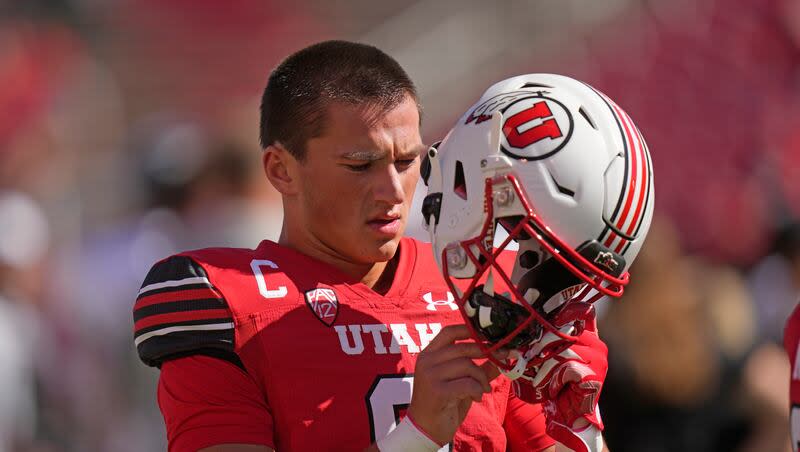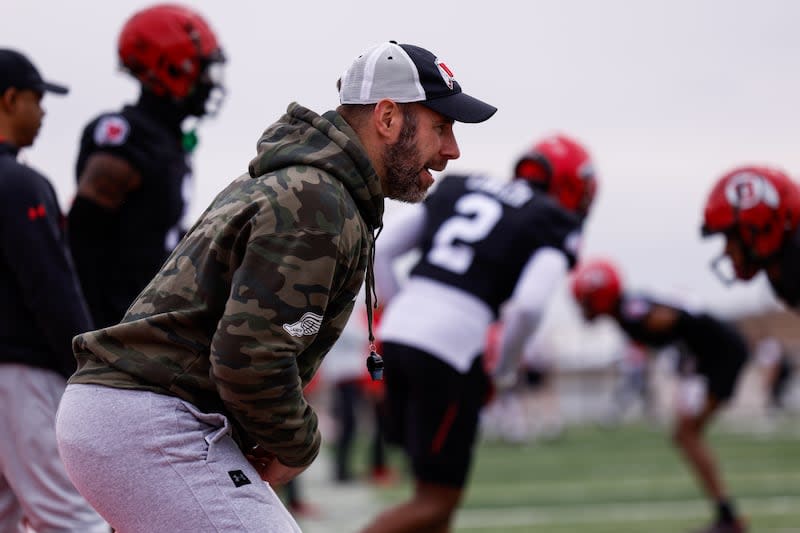When it comes to developing NFL-caliber DBs, here’s what sets Utah apart

As every football aficionado knows, some universities develop a reputation for producing a certain position. Penn State and linebackers. USC and wide receivers. BYU and quarterbacks. Alabama and running backs. Miami and tight ends. With very little fanfare, the University of Utah is building its own reputation, at least among pro scouts and coaches, for defensive backs.
“We’ve had a lot of continuity in our coaching staff, and they know what they’re looking for and recruit for it. … The coaches have done a good job of evaluating talent and coaching them up.”
Utah DC and safeties coach Morgan Scalley on the Utes' ability to produce NFL defensive backs
Of the five Utah players taken in the recent NFL draft, two are defensive backs, continuing a two-decade tradition of pro-caliber players at the position.
Buffalo Bills general manager Brandon Beane coveted Ute safety Cole Bishop so much that, after grabbing him in the second round, he confessed, “I would have been thrilled to give up something in the draft to (move up) and get him.” When someone applauded his patience for waiting, Beane said, “I wasn’t patient. It’s just that no one took my call or they took it, but politely declined. ... We struck out and we won because no one would deal with us.”
Beane would say of Bishop, “Probably one of the most consensus players on our board. Everyone saw exactly the same thing.”
In the fourth round, the Detroit Lions drafted the Utes’ other safety, Sione Vaki, although it is uncertain which side of the ball he will play. Vaki played running back and receiver, as well as safety, for the Utes and did a star turn at each position.
“When you talked to the scouts, they liked him as a safety first,” says Morgan Scalley, Utah’s defensive coordinator and safeties coach. “If you talked to the coaches, they liked him as a running back first and a safety second. They just want a football player.”
Defensive back has become the most drafted position at Utah. Of the 56 Utah players who have been drafted since head coach Kyle Whittingham’s first draft class in 2006, 17 have been defensive backs. All but one of them was coached by Scalley, who joined Whittingham’s staff in 2008.
Vaki and Bishop will join six other former Utah defensive backs who are currently on NFL rosters:
Safety Jaylon Johnson (second round, 2020) was a second-team All-Pro selection for the Bears in 2023.
Safety Terrell Burgess (third round, 2020) collected 25 tackles last season for the Commanders.
Safety Julian Blackmon (third round, 2020) totaled 88 tackles and eight pass deflections for the Colts last season.
Cornerback Clark Phillips (fourth round, 2023) had 22 solo tackles as a rookie cornerback last season with the Falcons, playing in 11 games and starting five.
Safety Eric Rowe (second round, 2015), currently with the Steelers, has made 294 solo tackles in the NFL.
Safety Marcus Williams (second round, 2017), who signed a $70 million contract in 2022 with the Ravens, has 20 career interceptions.
“It’s a number of things,” says Scalley, attempting to explain Utah’s run of NFL-caliber defensive backs. “No. 1 is we play so much man coverage. NFL scouts want to see if you can cover man to man. Our base coverage is man to man.”
With the proliferation of the pass game in the NFL, coverage skills have become highly valued, especially if a player is adept at man-to-man coverage, which allows the defense the luxury of blitzing and putting more players in the box.
“Success breeds success,” Scalley continues. “Defensive backs see we turn out draft picks at those positions. That’s what Jaylon wanted, and Clark Phillips.”
There is something else that sets the Utes apart: “We do multiple things with our safeties,” says Scalley.
The Utes drop them into deep halves for coverage, bring them up for man coverage, put them in the box for run support, send them on blitzes. “The Bills GM talked about Cole Bishop being able to do lots of things,” says Scalley. The Bills are known for requiring their safeties to be interchangeable, able to fill many roles.
Seven of Utah’s eight NFL defensive backs are safeties.
As Scalley notes, the Utes, a perennial top-20 program, rarely sign four- or five-star recruits, which means coaches must develop talent and see their potential at other positions. Williams was a converted wide receiver; Vaki was a high school wide receiver. Brian Allen and Tao Johnson, who started in the secondary last season, played quarterback and wide receiver, respectively.
“We just look for football players,” says Scalley. “We’ve had a lot of continuity in our coaching staff, and they know what they’re looking for and recruit for it. … The coaches have done a good job of evaluating talent and coaching them up.”
Looking ahead, Scalley thinks the scouts will be visiting Utah again next season to find more draftable defensive backs. “I really think that in this upcoming class we’ve got some safeties in the pipeline,” says the coach.


